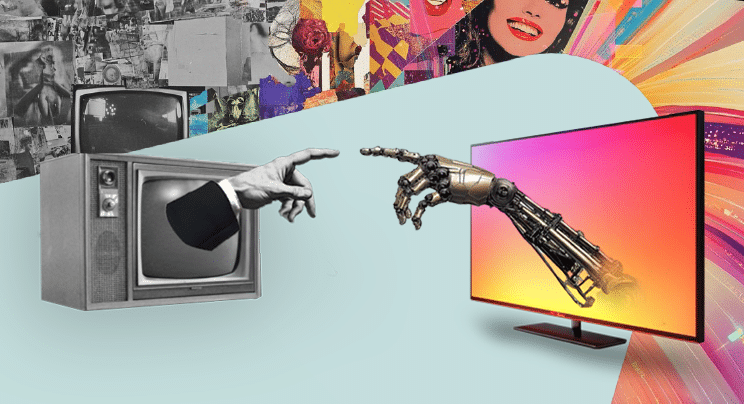DVB Update: MPEG-4 for Digital Video Broadcasting


MPEG-4 for Digital Video Broadcasting
By U. Georg Ohler
MPEG-4 is a multimedia toolbox developed by the Moving Picture Experts Group (MPEG) out of the need for a non-proprietary universal open multimedia standard. Its coding algorithms for natural sound and video, successors of renowned codecs such as MPEG-2 (the DVD codec) and MPEG-1 Layer 3 (MP3), are among the most effective video and audio coding schemes available.
Which parts of MPEG-4 are used depends on the intended application. For hard disk audio recording, for example, one would only take audio codecs from the audio subgroup and the file writer from MPEG-4 systems, and leave aside all video and SNHC (Synthetic/Natural Hybrid Coding) modules. Likewise, for many application areas, subsets of the standard (the so-called “profiles”) have been standardized too.
But what if tools used by the encoder are not implemented in the decoder? Being designed as a universal multimedia standard, even an MPEG-4 audio-only player could handle a full-blown MPEG-4 data stream with audio, video, synthetic objects and scene descriptions, and would play back only the natural audio part of the data. For more complex application schemes, there are standard bodies that set up agreements about the selection of tools and how to use them. The Internet Streaming Media Alliance (ISMA) covers audiovisual streaming setups for IP networks, while 3rd Generation Partnership Project (3GPP) deals with using MPEG-4 in the typical low bitrate low-complexity setup of mobile applications.
DVB is yet another standards body currently working on the integration of MPEG-4, and its main points of discussion concern coding efficiency, complexity, general acceptance and interoperability.
Video coding
The professional video industry's #1 source for news, trends and product and tech information. Sign up below.
Currently, the video codec of choice for the DVB is MPEG-2. Although it cannot easily be compared with the MPEG-4 video codec for several reasons, generally speaking at broadcast quality, that is at bandwidths of around 3Mb/s, the current MPEG-4 codecs have 15 percent higher coding efficiency than MPEG-2. Their general drawback is that these 15 percent are bought with a significantly higher encoding and a somewhat higher decoding complexity.
However, there are several reasons to use MPEG-4 video. First, the MPEG-2 video codec has been optimized since 1995 such that today it reaches 50 percent more compression than in 1995.
But today there is almost no way left to further improve the MPEG-2 coding. The MPEG-4 coding scheme, on the other hand, has been in existence for only three years, so the encoders are not fully optimized yet, and will increase in efficiency over the next years while staying compliant to the standard.
Second, there is a new addendum to the MPEG-4 standard, being prepared by the Joint Video Team, that will be published simultaneously by ITU-T and ISO/IEC in 2003. In its current pre-standard version, it brings an additional data reduction over MPEG-2 of 50 percent or more. The impact of its higher complexity in comparison to MPEG-2 and to today's MPEG-4 video codec is likely to be absorbed fairly quickly as microelectronics continue to get faster and more efficient.
And finally, using MPEG-4 video facilitates the inclusion of further MPEG-4 features that will be highly attractive to digital video broadcasters.
Audio coding
The picture is similar, although less ambiguous, on the audio side. The MPEG-1 Layer 2 audio codec used mostly in digital video broadcasting delivers high-quality stereo at 128kb/s, while MPEG-4 AAC (Advanced Audio Coding) offers the same quality at 64kb/s. Furthermore, there is an amendment called AAC-SBR (Spectral Bandwidth Replication) in preparation that is a backwardly-compatible extension of MPEG-4 AAC. It brings the bit rate down to 48kb/s at stereo, with high quality.
In addition, MPEG-4 audio is capable of coding 5.1-channel surround sound effectively and even allows transmission of wavefield audio data that, in the future, will allow sound systems to extend the listening sweet spot to the whole room.
All these improvements introduce further complexity. An MPEG-4-based audio/video system for example, is expected to have three times the computational complexity of the current DVB system, but because the complexity of the decoder side will be less than the encoder side, this will have less of an impact on the consumption side than the production side. Hence, the majority of devices will be less affected.
General acceptance
For digital audio broadcasting, MPEG-4 AAC already is in the process of replacing other codecs. The satellite-based XM Radio, which started its service last year, successfully uses AAC-SBR for its whole system. Digital Radio Mondiale, which will start broadcasting in 2003, also uses AAC.
Communication and multimedia devices are increasingly found in integrated solutions, and it may not be long before we see the telephone, hi-fi, Internet, PC, television and video recorder all implemented in a single device. The full advantages of such integration will not be realized, however, until a common multimedia data format is used, and for that, MPEG-4 may be the best solution. So although MPEG-4 is not as widely used as MP3 or the DVD, it already has started appearing in consumer products in the guise of QuickTime 6 and RealPlayer 8.
At the DVB World Convergence 2002 in March, Ken McCann, chairman of the DVB Audio/Video Coding Group, already presented a proposal for a new DVB specification and a revision of existing specifications with the objective of including MPEG-4 video and audio into DVB. So we can expect to find MPEG-4 in digital video broadcasting as soon as any of the broadcasters or hardware producers belonging to the DVB consortium decides to use it.
U. Georg Ohler is PR manager at the Audio & Multimedia Department of Fraunhofer Institute for Integrated Circiuts (IIS-A).
Do you have a comment about this article? To tell us your thoughts, click here.
